 W
WEarly modern Europe is the period of European history between the end of the Middle Ages and the beginning of the Industrial Revolution, roughly the late 15th century to the late 18th century. Historians variously mark the beginning of the early modern period with the invention of moveable type printing in the 1450s, the Fall of Constantinople and end of the Hundred Years’ War in 1453, the end of the Wars of the Roses in 1487, the beginning of the High Renaissance in Italy in the 1490s, the end of the Reconquista and subsequent voyages of Christopher Columbus to the Americas in 1492, or the start of the Protestant Reformation in 1517. The precise dates of its end point also vary and are usually linked with either the start of the French Revolution in 1789 or with the more vaguely defined beginning of the Industrial Revolution in late 18th century England.
 W
WThe 16th century begins with the Julian year 1501 and ends with either the Julian or the Gregorian year 1600.
 W
WThe 17th century was the century that lasted from January 1, 1601, to December 31, 1700. It falls into the Early Modern period of Europe and in that continent was characterized by the Baroque cultural movement, the latter part of the Spanish Golden Age, the Dutch Golden Age, the French Grand Siècle dominated by Louis XIV, the Scientific Revolution, the world's first public company and megacorporation known as the Dutch East India Company, and according to some historians, the General Crisis. The greatest military conflicts were the Thirty Years' War, the Great Turkish War, Mughal–Safavid Wars (Mughal–Safavid War, Mughal–Safavid War ), Mughal–Maratha Wars, and the Dutch–Portuguese War. It was during this period also that European colonization of the Americas began in earnest, including the exploitation of the silver deposits, which resulted in bouts of inflation as wealth was drawn into Europe.
 W
WThe 18th century lasted from January 1, 1701 to December 31, 1800. During the 18th century, elements of Enlightenment thinking culminated in the American, French, and Haitian revolutions. During the century, slave trading and human trafficking expanded on a global scale. Revolutions began to challenge the legitimacy of monarchical and aristocratic power structures, including the structures and beliefs that supported the slave trade.
 W
WThe Age of Sail was a period roughly corresponding to the early modern period in which international trade and naval warfare were dominated by sailing ships and gunpowder warfare, lasting from the mid-16th to the mid-19th centuries.
 W
WThe Atlantic slave trade, transatlantic slave trade, or Euro-American slave trade involved the transportation by slave traders of various enslaved African people, mainly to the Americas. The slave trade regularly used the triangular trade route and its Middle Passage, and existed from the 16th to the 19th centuries. The vast majority of those who were enslaved and transported in the transatlantic slave trade were people from Central and West Africa, who had been sold by other West Africans, or by half-European "merchant princes" to Western European slave traders, who brought them to the Americas. Except for the Portuguese, European slave traders generally did not participate in the raids because life expectancy for Europeans in sub-Saharan Africa was less than one year during the period of the slave trade. The South Atlantic and Caribbean economies were particularly dependent on labour for the production of sugarcane and other commodities. This was viewed as crucial by those Western European states that, in the late 17th and 18th centuries, were vying with each other to create overseas empires.
 W
WThe Atlantic World comprises the interactions among the peoples and empires bordering the Atlantic Ocean rim from the beginning of the Age of Discovery to the early 21st century. Atlantic history is split between three different contexts: trans-Atlantic history, meaning the international history of the Atlantic World; circum-Atlantic history, meaning the transnational history of the Atlantic World; and cis-Atlantic history within an Atlantic context. The Atlantic slave trade continued into the 19th century, but the international trade was largely outlawed in 1807 by Britain. Slavery ended in 1865 in the United States and in the 1880s in Brazil (1888) and Cuba (1886). While some scholars stress that the history of the "Atlantic World" culminates in the "Atlantic Revolutions" of the late 18th early 19th centuries, the most influential research in the field examines the slave trade and the study of slavery, thus in the late-19th century terminus as part of the transition from Atlantic history to globalization seems most appropriate.
 W
WAvvisi were hand-written newsletters used to convey political, military, and economic news quickly and efficiently throughout Europe, and more specifically Italy, during the early modern era (1500-1700). In the beginning avvisi were very similar to letters written from one dignitary to another, but diverged from such letters in the sixteenth century with more standardized practices. Avvisi can be divided into two categories: 'public' avvisi and 'secret' avvisi, though each copy was often written by the same person.
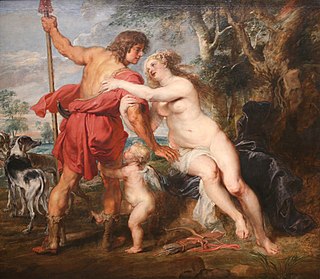 W
WThe Baroque is a style of architecture, music, dance, painting, sculpture and other arts that flourished in Europe from the early 17th century until the 1740s. In the territories of the Spanish and Portuguese empires including the Iberian Peninsula it continued, together with new styles, until the first decade of the 1800s. It followed Renaissance art and Mannerism and preceded the Rococo and Neoclassical styles. It was encouraged by the Catholic Church as a means to counter the simplicity and austerity of Protestant architecture, art and music, though Lutheran Baroque art developed in parts of Europe as well.
 W
WThe divine right of kings, divine right, or God's mandate is a political and religious doctrine of political legitimacy in a monarchy. It stems from a specific metaphysical framework in which a king is pre-ordained to inherit the crown before their birth. Under this theory of political legitimacy the subjects of the crown are considered to have actively turned over the metaphysical selection of the king's soul – which will inhabit the body and rule them – over to God. In this way, the "divine right" originates as a metaphysical act of humility or submission towards God. The divine right has been a key element for legitimizing many absolute monarchies.
 W
WThe cuisine of early modern Europe was a mix of dishes inherited from medieval cuisine combined with innovations that would persist in the modern era.
 W
WFrench peasants were the largest socio-economic group in France until the mid-20th century.
 W
WThe Hebrew Republic, also “De Republica Hebraeorum”, and also “Respublica Hebraeorum”, is an early modern concept in political theory in which Christian scholars regarded the Hebrew Bible as a political constitution framing a perfect and republican government designed by God for the children of Israel.
 W
WThe Holy Roman Empire was a multi-ethnic complex of territories in Western and Central Europe that developed during the Early Middle Ages and continued until its dissolution in 1806 during the Napoleonic Wars. The largest territory of the empire after 962 was the Kingdom of Germany, though it also included the neighboring Kingdom of Bohemia and Kingdom of Italy, plus numerous other territories, and soon after the Kingdom of Burgundy was added. However, while by the 15th century the Empire was still in theory composed of three major blocks – Italy, Germany, and Burgundy – in practice only the Kingdom of Germany remained, with the Burgundian territories lost to France and the Italian territories, ignored in the Imperial Reform, mostly either ruled directly by the Habsburg emperors or subject to competing foreign influence. The external borders of the Empire did not change noticeably from the Peace of Westphalia – which acknowledged the exclusion of Switzerland and the Northern Netherlands, and the French protectorate over Alsace – to the dissolution of the Empire. By then, it largely contained only German-speaking territories, plus the Kingdom of Bohemia. At the conclusion of the Napoleonic Wars in 1815, most of the Holy Roman Empire was included in the German Confederation.
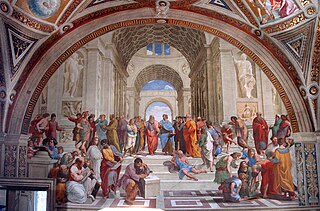 W
WThere was a certain amount of cultural contact between Europe in the Renaissance to Early Modern period and the Islamic world, however decreasing in intensity after medieval cultural contact in the era of the crusades and the Reconquista.
 W
WThe Kingdom of Sicily was a state that existed in the south of the Italian peninsula and for a time the region of Ifriqiya from its founding by Roger II of Sicily in 1130 until 1816. It was a successor state of the County of Sicily, which had been founded in 1071 during the Norman conquest of the southern peninsula. The island was divided into three regions: Val di Mazara, Val Demone and Val di Noto; val being the apocopic form of the word vallo, derived from the Arabic word wilāya.
 W
WAn L-plan castle is a castle or tower house in the shape of an L, typically built from the 13th to the 17th century. This design is found quite frequently in Scotland, but is also seen in England, Ireland, Romania, Sardinia, and other locations. The evolution of its design was an expansion of the blockhouse or simple square tower from the Early Middle Ages. As building techniques improved, it became possible to construct a larger building footprint and a more complex shape than the simple blockhouse tower. A more compelling motivation for the L plan was the ability to defend the entrance door by providing covering fire from the adjacent walls. This stratagem was particularly driven by the advent of cannon used by attackers.
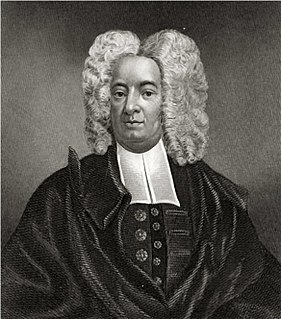 W
WCotton Mather was a New England Puritan minister, prolific author, and pamphleteer. One of the most important intellectual figures in English-speaking colonial America, Mather is remembered today chiefly for his Magnalia Christi Americana (1702) and other works of history, for his scientific contributions to plant hybridization and to the promotion of inoculation as a means of preventing smallpox and other infectious diseases, and for his involvement in the events surrounding the Salem witch trials of 1692–3. He also promoted the new Newtonian science in America and sent many scientific reports to the Royal Society of London, which formally elected him as a fellow in 1723. A controversial figure in his own day, he sought unsuccessfully the presidency of Harvard College, which had been held by his father Increase, another important Puritan intellectual.
 W
WNeoclassicism was a Western cultural movement in the decorative and visual arts, literature, theatre, music, and architecture that drew inspiration from the art and culture of classical antiquity. Neoclassicism was born in Rome largely thanks to the writings of Johann Joachim Winckelmann, at the time of the rediscovery of Pompeii and Herculaneum, but its popularity spread all over Europe as a generation of European art students finished their Grand Tour and returned from Italy to their home countries with newly rediscovered Greco-Roman ideals. The main Neoclassical movement coincided with the 18th-century Age of Enlightenment, and continued into the early 19th century, laterally competing with Romanticism. In architecture, the style continued throughout the 19th, 20th and up to the 21st century.
 W
WThe Ottoman–Habsburg wars were fought from the 16th through the 18th centuries between the Ottoman Empire and the Habsburg Monarchy, which was at times supported by the Holy Roman Empire, Kingdom of Hungary, Polish–Lithuanian Commonwealth, and Habsburg Spain. The wars were dominated by land campaigns in Hungary, including Transylvania and Vojvodina, Croatia and central Serbia.
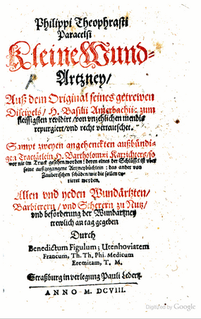 W
WParacelsianism was an early modern medical movement based on the theories and therapies of Paracelsus. It developed in the second half of the 16th century, during the decades following Paracelsus' death in 1541, and it flourished during the first half of the 17th century, representing one of the most comprehensive alternatives to learned medicine, the traditional system of therapeutics derived from Galenic physiology. Based on the principle of maintaining harmony between the microcosm, Man; and macrocosm, Nature.
 W
WA peasant is a pre-industrial agricultural laborer or a farmer with limited land-ownership, especially one living in the Middle Ages under feudalism and paying rent, tax, fees, or services to a landlord. In Europe, three classes of peasants existed: slave, serf, and free tenant. Peasants may hold title to land either in fee simple or by any of several forms of land tenure, among them socage, quit-rent, leasehold, and copyhold.
 W
WThe Renaissance was a period in European history marking the transition from the Middle Ages to modernity and covering the 15th and 16th centuries. It occurred after the Crisis of the Late Middle Ages and was associated with great social change. In addition to the standard periodization, proponents of a long Renaissance put its beginning in the 14th century and its end in the 17th century. The traditional view focuses more on the early modern aspects of the Renaissance and argues that it was a break from the past, but many historians today focus more on its medieval aspects and argue that it was an extension of the Middle Ages.
 W
WRocaille was a French style of exuberant decoration, with an abundance of curves, counter-curves, undulations and elements modeled on nature, that appeared in furniture and interior decoration during the early reign of Louis XV of France. It was a reaction against the heaviness and formality of the Style Louis XIV. It began in about 1710, reached its peak in the 1730s, and came to an end in the late 1750s, replaced by Neoclassicism. It was the beginning of the French Baroque movement in furniture and design, and also marked the beginning of the Rococo movement, which spread to Italy, Bavaria and Austria by the mid-18th century.
 W
WRococo, less commonly Roccoco or Late Baroque, is an exceptionally ornamental and theatrical style of architecture, art and decoration which combines asymmetry, scrolling curves, gilding, white and pastel colors, sculpted molding, and trompe l'oeil frescoes to create surprise and the illusion of motion and drama. It is often described as the final expression of the Baroque movement.
 W
WMaritime travel experienced a large leap in the capabilities of seafaring vessels thanks to technological improvements in shipbuilding in the early modern era. Europe, Asia, and the Middle East all saw improvements on prior construction techniques, contributing to the Age of Discovery. As a result, the introduction of these technologies in the production of naval vessels was critical as they allowed nations that utilized these advancements to ascend to a state that could expand its influence at a far greater range. In military engagements, the exploration of new lands and potential colonies, or the transportation of goods for trade, better shipbuilding techniques coincided with prosperity. It is during this time that the practice of naval architecture appeared, as skilled designers could produce designs that had an enormous impact in ship performance and capabilities.
 W
WVermeer's Hat: The Seventeenth Century and the Dawn of the Global World is a book by the Canadian historian Professor Timothy Brook, in which he explores the roots of world trade in the 17th century through six paintings by the Dutch Golden Age painter Johannes Vermeer. It focuses especially on growing ties between Europe and the rest of the world and the impact of China on the world, during what Brook sees as an "age of innovation" and improvisation.
 W
WVoyages: The Trans-Atlantic Slave Trade Database is a database run by researchers at Emory University which aims to present all documentary material pertaining to the transatlantic slave trade. It is a sister project to African Origins.
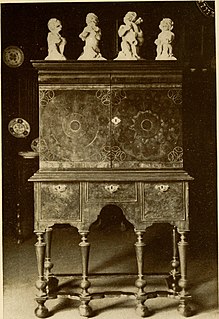 W
WWhat later came to be known as the William and Mary style is a furniture design common from 1700 to 1725 in the Netherlands, the Kingdom of England, the Kingdom of Scotland, and later, in England's American colonies. It was a transitional style between Mannerist furniture and Queen Anne furniture. Sturdy, emphasizing both straight lines and curves, and featuring elaborate carving and woodturning, the style was one of the first to imitate Asian design elements such as japanning.